
According to Bridgestone, its MasterCore line of tires deliver 5% more durability, 10% faster speeds, or
15% greater payloads than comparable products. (Photo: Bridgestone Americas)
Driving Mining into the Future
We look at the latest developments in mining tire design, monitoring and management
By Carly Leonida, European Editor

Despite these issues, global GDP continues to grow, and underlying commodity demand remains strong; something which is expected to continue well into the future. Where there is demand for metals and minerals, there is demand for OTR tires, and the future looks bright for suppliers whose collective focus is evolving to encompass greater sustainability as well as performance and safety.
E&MJ asked eight companies from across the supply base how they’ve fared over the past year and what’s new for 2023-2024.
Bridgestone Doubles
Down on Sustainability
To kick off, E&MJ asked Rob Seibert,
President of Off-the-Road, U.S. and
Canada, at Bridgestone Americas,
what’s currently driving change in mine
tire management?
“It’s becoming increasingly important
for customers to consider the long-term
value of a mining tire and how it can positively
impact the efficiency of each operation,”
he explained. “Today, there’s also
a greater emphasis on sustainability in
the mining industry than ever before.
“Our MasterCore mining tire technology is designed with this in mind. MasterCore products deliver 5% more durability, 10% faster speeds, or 15% greater payloads than comparable products. That increased production can translate to financial savings for an operation. Plus, when Bridgestone products are paired with our on-site engineering and digital technologies, mines can avoid unplanned downtime that means saving tires in the long run.”
Mine managers now expect real- time updates on every aspect of their operation in the palm of their hands, as well as safe and reliable equipment for each jobsite. This shift leans into the push for more sustainable practices within the industry, as well.
“Bridgestone is evolving to become a global leader in sustainable mobility solutions, and that direction impacts our mining segment,” said Seibert. “Pairing our products with solutions like Bridgestone’s IntelliTire and iTrackII — our subscription-based mine monitoring systems — helps maximize operational efficiency. Prioritizing sustainability in products and solutions ultimately results in longer total wear, less unplanned downtime, and tires — or, more specifically, raw materials and resources — saved over time.”
Bridgestone is focused on producing a premium product for customers but is also mindful that it must maximize their productivity, life and durability. Extending the life of a tire means that it can move more tons which will result in less waste. The fewer tires that must be produced, the lower the industry’s CO2 emissions…
“Being able to do more with less really matters to us,” said Seibert. “Bridgestone has set ambitious goals for the future, including 2050 targets for carbon neutrality and delivering tires made from 100% renewable materials.” “We expect 2023 to be another strong year for the mining market as commodity pricing continued to improve at the beginning of the year, offsetting some of the reduced pricing in Q4 of 2022,” Seibert told E&MJ. “Underlying global demand remains strong as well, which will support the production levels required to keep tire demand strong.”
Cabot: New Materials
for Better Tires
Of course, tire design, quality and performance
are more than just a function
of their manufacturing, they are also
dependent upon the materials of which
tires are composed. David Reynolds,
Vice President and General Manager
at Cabot Engineered Elastomer Composites,
spoke to this.
“Our mining tire customers are focused
on three critical issues today: performance, sustainability and efficiency,”
he explained. “They need to deliver tires
that perform, create value and improve
sustainability for mine operators, and
they want solutions that help them to
produce tires more efficiently.
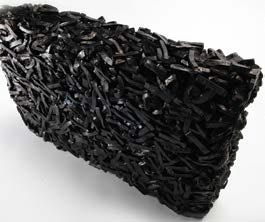
“By delivering pre-mixed E2C products directly to mining tire manufacturers, we enable higher production rates for rubber compounds and create options for growth in tire production without investment in new capacity.” Cabot recently launched two new E2C products that give mining tire manufacturers additional options for products with high durability in demanding operating environments. The E2C FX9570 and E2C EX9620 solutions are formulated to deliver improvements in durability and heat minimization in OTR tires.
“Our E2C FX9570 product enables high rubber durability in rough environments where cutting and chipping is prevalent, and duty cycles demand higher heat resistance,” said Reynolds. “FX9570 lowers heat build-up by up to 20% versus conventional compounds which helps increase fuel efficiency and reduces the emissions of vehicle fleets.” There is currently a lot of interest in increasing circularity in the mining tire market and Reynolds sees retreading as one of the most promising ways to make this happen.
“We have a major focus on using our E2C products to enable an expansion of retreading in the mining industry,” he told E&MJ. “For many years, mining companies have avoided retreading the largest tire sizes due to concerns about the quality of retreads and their ability to deliver performance. But by sourcing high-performance E2C solutions, mining tire retreaders are now upgrading their offerings and creating options for retreading mining tires for the most demanding environments.”
Tire manufacturers are also looking to increase the quantity of sustainable materials in their products. “We recently launched EVOLVE Sustainable Solutions, a new platform for advancing sustainable reinforcing carbons,” Reynolds said. “Our ambition through this is to develop products that offer sustainable content with reliable performance at industrial scale by leveraging circular value chains and materials recovered from end-of-life tires, renewable and/or bio-based materials, and/or processes that reduce greenhouse gas (GHG) emissions.”
Continental, Making Tires
Digital
Today, digital tire management is key to
delivering full transparency, productivity
and the lowest total cost of ownership.
As such, all Continental Radial Earthmover
Tires are now equipped with
integrated sensors as standard, and
the ContiConnect 2.0 tire management
system supports operations to reduce
fuel consumption and cut emissions.
Matthew Futrelle, Head of Business Field for Earthmover Tires at Continental, said: “Mines are striving to be more efficient. This means higher horsepower equipment and, in many cases, more demanding haul routes. In order to operate in this environment, more robust and capable tires have had to be developed and these products need to be consistently monitored. We utilize our ContiLogger system to evaluate mining operations and recommend the correct product or even haul route modifications for better performance. The ContiConnect 2.0 system also monitors tire pressure and temperature to make sure the tires are operating optimally.”
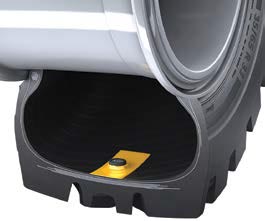
He added that, in order to tackle some of the headwinds that the mining industry has experienced over the past few years, operators are striving for greater agility and efficiency. With ContiConnect 2.0, every tire can be tracked individually, whether on a vehicle or in storage. Each tire has a digital twin in the system and an article number, meaning fleet operators always know which tire is fitted on which vehicle and in which position.
Going forward, Futrelle is taking over the global management of Continental’s Earthmoving business field, including mining tires, as a realignment of the company’s Specialty Tires business area. “We want to bring Continental closer to its distribution partners and end users, and work towards being one of the most sustainable earthmover solutions available,” Futrelle told E&MJ: “We want to bring the best and most needed products to the market and are leveraging our knowledge in digital solutions to add visibility, analytics for decision making and value to our offerings.”
KalTire, Solutions for Full
Lifecycle Management
Given the events of the past two years,
mines have become acutely aware and
concerned about supply chain disruption,
management and integrity, and
this includes tire cost and security of
delivery. Many tire manufacturers have
had to cope with personnel shortages,
training new staff, and uncertainty
in shipping and supply chains to bring
these essential products to market.
Now, the industry is dealing with inventory
spikes as demand and supply
chains start to normalize.
Dan Allan, Senior Vice President of Kal Tire’s Mining Tire Group said that, while it used to be a simple matter of forecasting usage, placing orders, and managing inventory, the company is now putting heightened focus on securing its supply chains. “We have devoted a great deal of time and energy to supply chain evaluations recently, and ensuring we have alternates in the case of disruption,” he explained. “The people crisis is still acute in almost every market too. It’s hard to find tire technicians, and it’s also hard to keep them. We’re working with various programs to attract a more gender-balanced workforce and to improve the attractiveness of the tire industry to new recruits.”
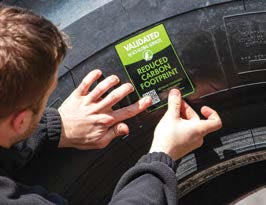
One of KalTire’s most interesting developments is the introduction of autonomous tire inspection stations that utilize a thermal imaging camera from PitCrew.ai. By combining data with artificial intelligence and optical recognition cameras, this allows mines to perform unmanned tire inspections. The system can spot potential problems before they occur, and expert technicians can be deployed to resolve issues before they result in any loss of production.
“It’s a great example of how we can combine data with the expertise we have in tire management and new technology to add value to a customer’s business,” said Allan. “We’re also continuing to invest in our Innovation Centre which looks for ways to use technology or new approaches to tire-related work to help our teams become better, faster, safer, or more efficient. This has resulted in a few patented products which we now use in the field. In the next two years, we will bring to market our Kal Clamp tool which enhances team member safety when mounting or demounting wheels on mining trucks, and our Rim Inspection solution which will allow us to verify the integrity of mining wheels on site.”
Mines have always been interested in extending the useful life of their tires — whether through repairing, retreading, rotation strategies or tire selections based on application — but sustainably managing tires through their end-oflife is now part of that discussion too, and KalTire has seen increased activity and interest in viable solutions from almost every market in which it operates recently.
“We noticed a couple of years back that environmental stewardship was gaining traction with mining companies,” Allan explained. “Almost all mines have sustainability targets for the coming decades, and we developed our MAPLE program to help them on that journey. The MAPLE program is an independently certified statement of the GHG reductions found in the use of our repair and retreaded tire products, and the interest and take up of this from our customers has been very robust.”
KalTire is also continually looking at mining markets and assessing their readiness for activities like recycling. “We are actively looking at some key mining markets together with our partner Mitsui to find that next investment for our recycling plants,” Allan told E&MJ. “We see increasing interest from many customers and markets and are excited about the opportunities in this space.”
Michelin: Excellence
Through Innovation
Tires and tire-related solutions play a
direct role in helping mines to operate
safer, smarter and more sustainably. To
that end, tire management strategies
have evolved as vehicles have become
more sophisticated, access to data
more prevalent and government and
legislation more stringent.
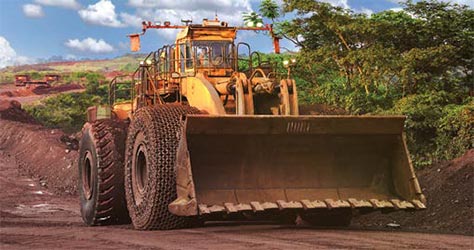
For more than 30 years, Michelin has been working to reduce its environmental impact, and design products, services and solutions that contribute to the advancement of sustainable mobility. Murphy said the company is exploring ways to improve the environmental impact of its mining tires from ‘cradle to grave.’ This involves examining raw material extraction, their usage in design and production, how energy efficient tires are while in use, and what happens at their end-of-life.
“Michelin uses Life Cycle Assessments (LCAs) to understand the impacts of its products, services, and solutions,” Murphy explained. “Each stage of the lifecycle is assessed across 16 environmental impacts.” “One of the most significant environmental impacts is raw materials. The use of renewable and recyclable materials in mining tires minimizes the depletion of natural resources and increases circularity. Further, Michelin is working with customers on three continents on end-of-life tire recycling solutions, one of which will be operational this year in Chile.”
In September 2022, Michelin launched MEMS LITE, its newest connected tire management system for surface mining and quarry vehicles. MEMS LITE is an entry-level tire monitoring solution that delivers periodic tire pressure and temperature data remotely with no hardware required on trucks. More recently, Michelin has launched the 70/70R57 X MINE L4 tire. This is the first radial tire constructed for the Komatsu WE2350/P&H L2350 — the world’s largest wheel loader. The X MINE L4 is designed specifically to deliver better productivity through improved mobility, with greater tramming speeds and outstanding endurance in harsh mining conditions.
Titan: Wheels and Tires
as a System
Whereas 10 years ago, tire management
software was still relatively, now
virtually every major mining operation
utilizes it extensively, allowing for better
historical data on how certain tires
perform in different conditions, as well
as better service planning for rotations,
repairs and inspections. Additionally,
these technologies have also evolved to
track wheel condition and maintenance.
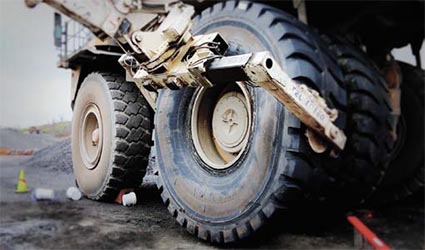
“Mining operations must strive for the same goal they always have: to produce as much tonnage as possible at the lowest cost per ton,” he said. “Titan is focused on innovations to help them achieve that. For instance, our Accelerated Change Technology (ACT) wheel reduces downtime associated with tire changes or rotations by as much as 50% by allowing technicians to remove the inner tire without having to remove the outer wheel. In a test at an Alabama coal mine, this increased the mine’s productivity by 14 loads or 1,377 tons per year, per truck. At the time of the test, that equated to roughly $80,000 in revenue per truck per year.”
Kearney said that, as mines become more effective in extending tire life, through use of management software and better practices, Titan is seeing more repairs versus replacements.
“Mining operations are increasingly looking at scope 3 emissions in their supply chain as well, which includes their tire and wheel suppliers,” he added. “Titan is already using recycled carbon black in its agricultural tires, and it’s something we’re evaluating for OTR tires as well. As the largest off-highway wheel manufacturer in the world, we also work with suppliers integrating recycled steel into what they supply to us and, as long as it meets our high-quality standards, we want to integrate as much recycled steel content as possible.”
Yokohama, the Fundamentals
of Performance
Mines still want the longest tire life, highest
productivity, and lowest total cost of
ownership, and that comes down to selecting
the right tire for the application,
machine, and surface, then operating it
at the correct inflation pressure.
“Performance and return on investment (ROI) will always be the most important topic in tires,” Bruce Besancon, Vice President–Marketing and Strategy at Yokohama Off-Highway Tires Americas Inc., said. “In most cases, when we talk about mining tires, we concentrate on haul trucks or loaders. But mining fleet owners also need to consider the tires on all their other equipment, including motor graders, small loaders, and even pickup trucks.

To manage recent supply challenges, Yokohama has expanded its manufacturing capacity, supported its logistics and customer service teams, and is working with mining customers to ensure they have the tires they need. The company opened a new manufacturing plant in Visakhapatnam, India, in Q4 of 2022, and is already building the second phase of the plant to increase its capacity.
“Our plant in Dahej was recently expanded as well. The result is a huge increase in our global manufacturing capacity,” Besancon told E&MJ. “We also expanded our customer service capabilities in North America by introducing our Yokohama Off-Highway Tires B2B E-Commerce Portal.”
Yokohama Off-Highway Tires is constantly developing new solutions for the three key areas in tire design: structure, tread pattern, and materials. Besancon said that improving these factors creates tires with better performance and longer service life, and contributes to profitability, fuel efficiency, and output.